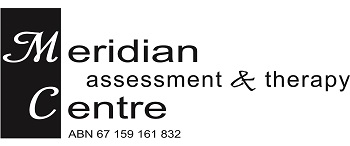Depression Treatment in Sydney
While the occasionally feeling sad or depressed is normal, depression as a type of mood disorder involves a much more painful and pervasive experience. Unlike normal reactions to life hurdles, depression involves a combination of symptoms that impact a person’s ability to function in some important aspect/s of their life such as work, study, relationships, self-care, etc.
The most commonly encountered presentations of depression include: Major Depressive Disorder, and Persistent Depressive Disorder.
Major Depressive Disorder is characterised by the experience of five or more of the following symptoms for most of the day, nearly every day for at least two weeks. Either depressed mood, or anhedonia (an inability to feel pleasure or interest in activities that are usually enjoyable), must be present for a diagnosis.
- The presence of a persistent sad, depressed or hopeless mood for most of the day, every day for at least two weeks
- Loss of interest or pleasure in all activities (anhedonia)
- Weight loss (without dieting) or gain (change of more than 5% body weight in a month), or a decrease or increase in appetite
- Insomnia or hypersomnia
- Agitation or marked physical slowing
- Fatigue or loss of energy
- Feeling worthless or excessive/ inappropriate guilt (not merely self-reproach about being depressed)
- Decreased concentration and or ability to think or to make decisions
- Thoughts of death or suicide (not just fear of dying), recurrent suicidal thoughts without a plan or an attempt, or suicidal thoughts with a specific plan or attempt
Persistent Depressive Disorder PDD
This is a continuous long term form of depression. You may feel sad and empty all the time, struggle to experience enjoyment and to get anything done. You may also have very low self-esteem and feel hopeless. The feelings can last for years and have a terrible impact of relationships, work, study and daily activities.
Diagnosis of PDD involves
A. A persistent feeling of sadness, emptiness or irritability, most of the day, on more days than not, for at least two years (or one year for children and adolescents)
B. The presence of two (or more) of the following when depressed:
- Poor appetite or overeating
- Insomnia or hypersomnia (sleeping too much)
- Low energy or fatigue
- Low self esteem
- Poor concentration or difficulty making decisions
- Feelings of hopelessness
C. During the 2 year period (or one year for children or adolescents), the individual has not been without symptoms from criteria A and B for more than 2 months at a time
D. If criteria for Major Depressive Episode have also been present for the 2 years, both Persistent Depressive Disorder and Major Depressive Disorder diagnoses are given.
Treatment for Depression
Depression- whether short term and intense (Major Depressive Disorder) or long lasting and persistent (Persistent Depressive Disorder) – can affect mood, energy, sleep, relationships, work and daily life in general. Treatment focuses on lifting the weight of low mood, improving day to day functioning, and restoring a sense of hope. Evidence approaches such as Cognitive Behavioural Therapy, Interpersonal Therapy can help change unhelpful thought patterns, build coping skills, and improve emotional wellbeing. With the right help, recovery is possible, and life can be meaningful and fulfilling again.

